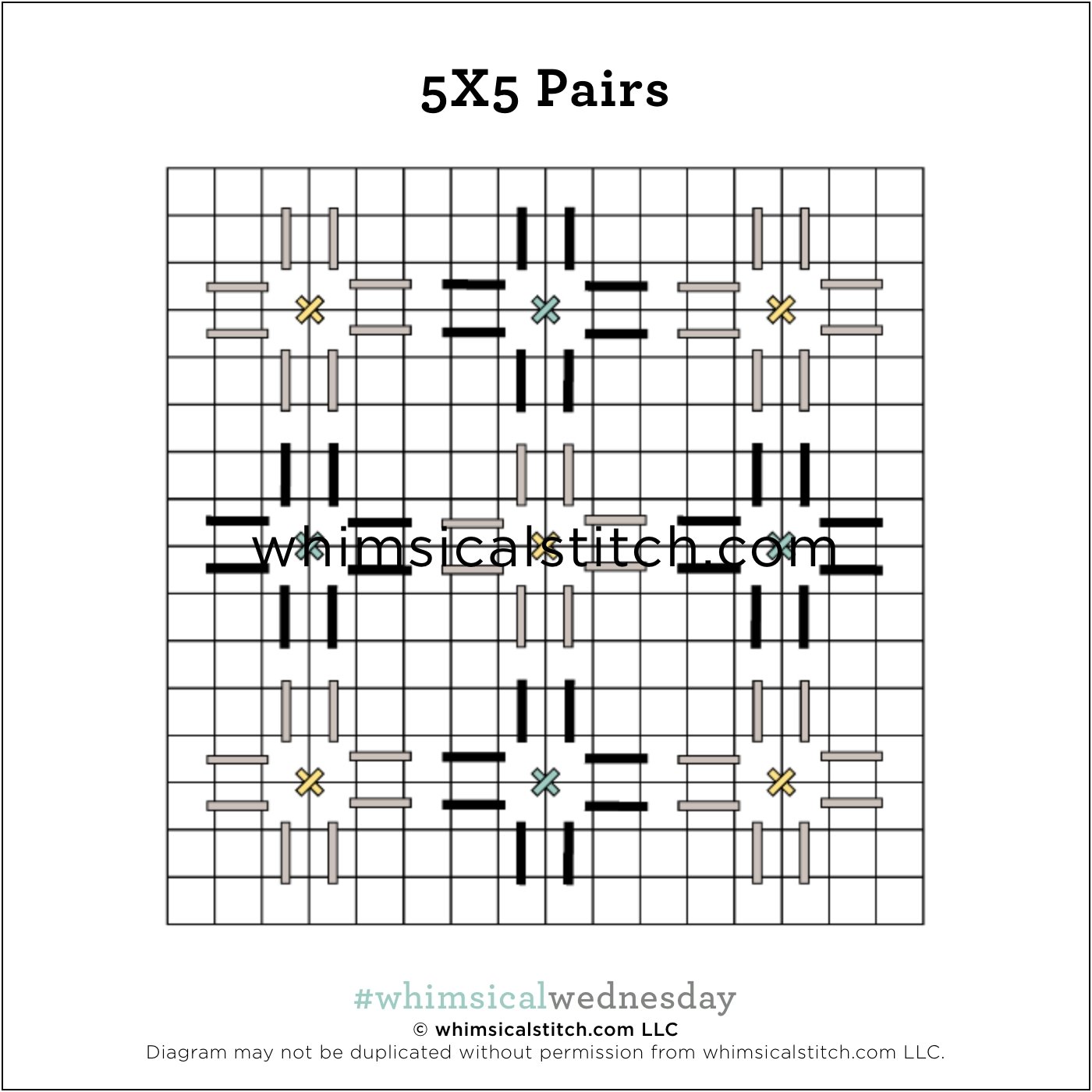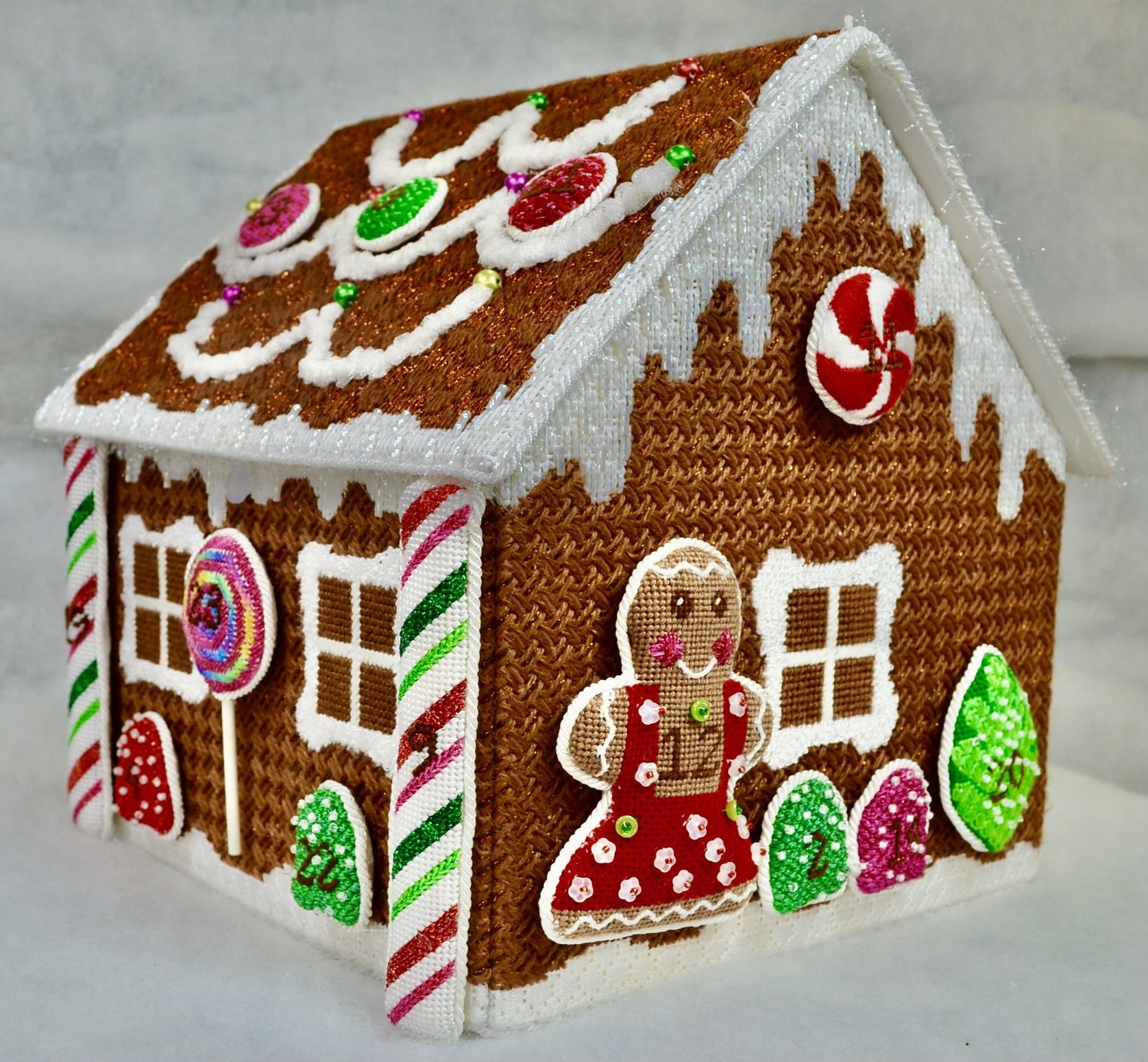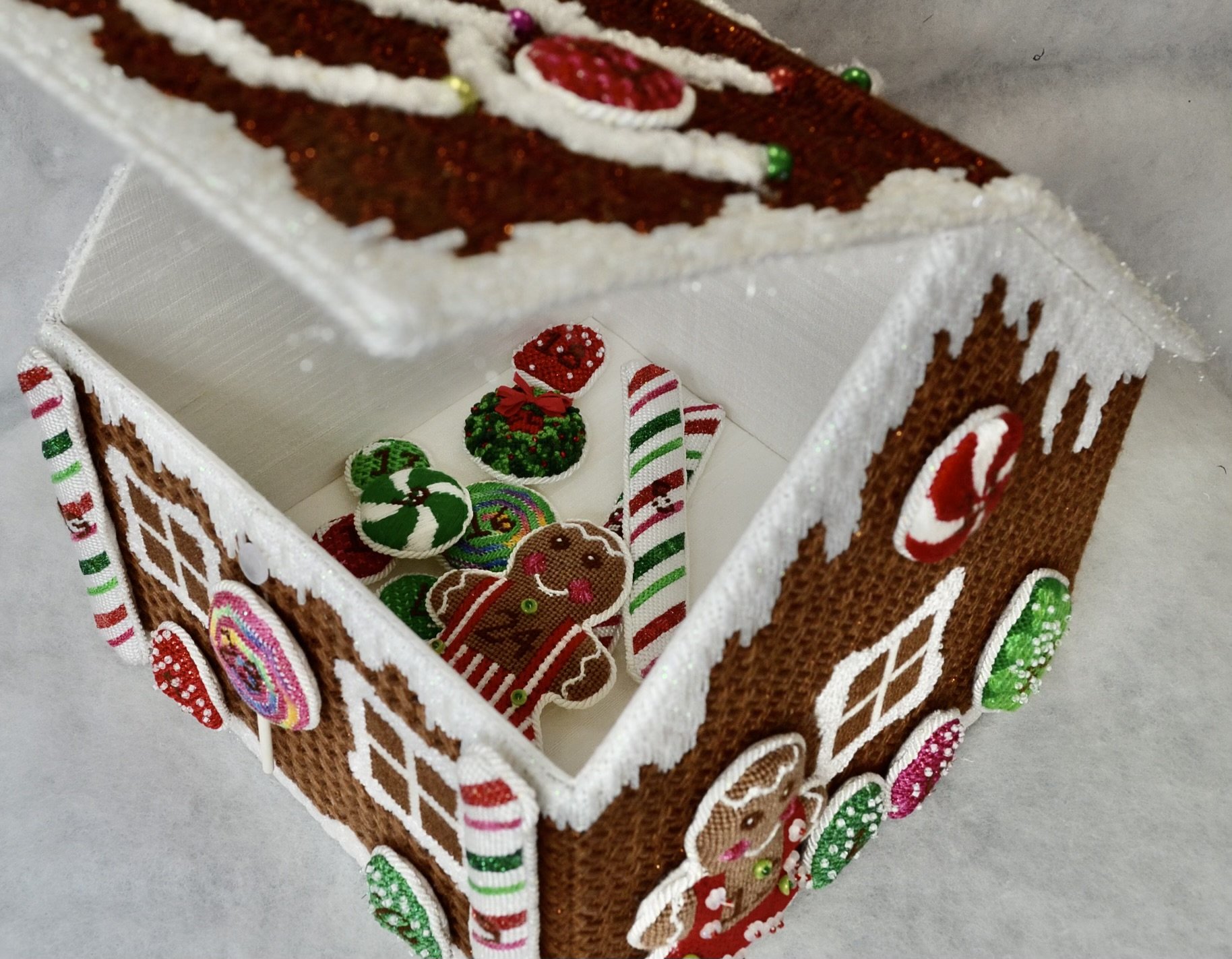I had a stitch in mind for this week but I also needed a background for a piece I’m working on. I focused on the latter and am very pleased.
The stitched sample is the background for the Pineapple Wreath canvas by KCN. The entire canvas is a work in progress, with a huge dish of spaghetti threads on it. (I’ll post a cleaned-up version later.) I used Treenway Shinju for the black lines and a pink Silk Lame 18 for the yellow lines.
I stitched the wreath and bow in basketweave, using Silk Lame 18 for the bow with a light green Pepper Pot Silk and a darker green Vineyard Silk for the pineapples. I must admit, being a lifelong California girl, I mistook the greenery for artichokes, but thanks to the internet, I now know better.
This stitch is scalable, so you can easily adjust the amount of open space. A slightly smaller version with the same-size pink diamonds and three stitches between the diamonds will be darling as a background for an ornament. You can also make the single white stitch in the center of each diamond a third color or a bead for a stitch that will pop a little more.
I hope you have the perfect spot for it. Have fun playing with it. I hope you enjoy it!
As you are auditioning stitches (from any stitch source), count the number of canvas threads on the diagram that match your mesh size. And there you have what an inch of the stitch will look like. Evaluate that against the area where you plan to use the stitch and make your final decision. If you start integrating this step into your stitch selection process, you may be surprised at how many stitches you think are large are much smaller than you realize.
By (sometimes) including this step in my own process, I find I am now integrating much longer stitches than I ever thought I would. I used to think a stitch six rows long was super big. I have very much changed my tune, which has helped me expand my creativity, especially for large-space stitches.
Today’s stitch diagram, along with all other #whimsicalwednesday and #smallspacesunday stitch diagrams, can also be found on a Pinterest board here. Be sure to follow whimsicalstitch.com on Facebook, Pinterest, Instagram, and Twitter.
If you like what you see on this blog, there's more. Mary’s Whimsical Stitches is a series of four books offering contemporary how-to collections of more than 200 stitches (in each volume) for all stitchers, regardless of skill level. All books include updated and sequenced diagrams from this blog, plus a collection of all-new stitches from private lessons and other class projects. Visit here to find a needlepoint retailer that carries my books.
New to needlepoint or looking for a refresher? Please download a handy how-to guide covering basic needlepoint stitches and stitch compensation techniques along with new top-line information on needlepoint materials and tools, how to handle threads, and other helpful needlepoint resources.
whimsicalstitch.com also sells Stitch Guides and Stitch Concepts for Melissa Shirley Designs, Zecca Designs, Sandra Gilmore, Purple Palm, Maggie, and Penny MacLeod, and many more. Click here to see the newest guides and click here to see the entire collection.
I hope you have the perfect spot for this stitch! Please enjoy! Have a wonderful #whimsicalwednesday!
A Note about Diagrams
I use color in diagrams to make them as clear as possible. The primary function of different colored lines is to illustrate a stitch sequence. For example, the layering of colors demonstrates you add them in that order. They can also provide ideas on integrating additional threads (one line for each color). Or, you can use the same thread for all color lines. That's where I encourage you to use your imagination for the space you are stitching!














